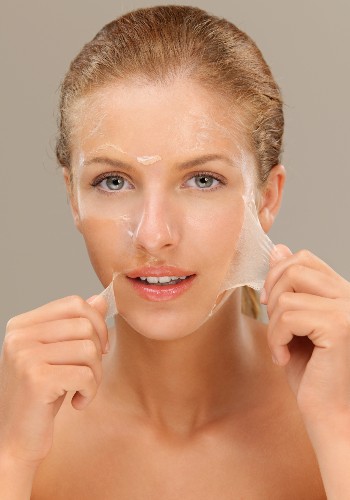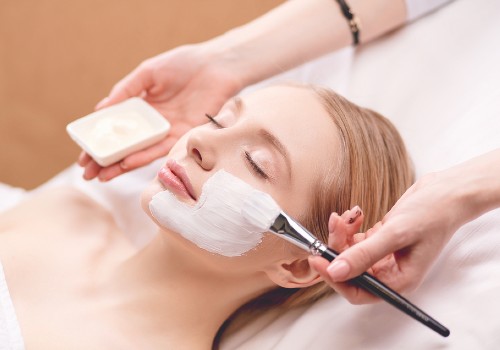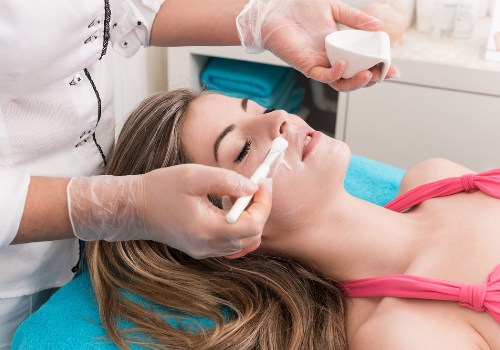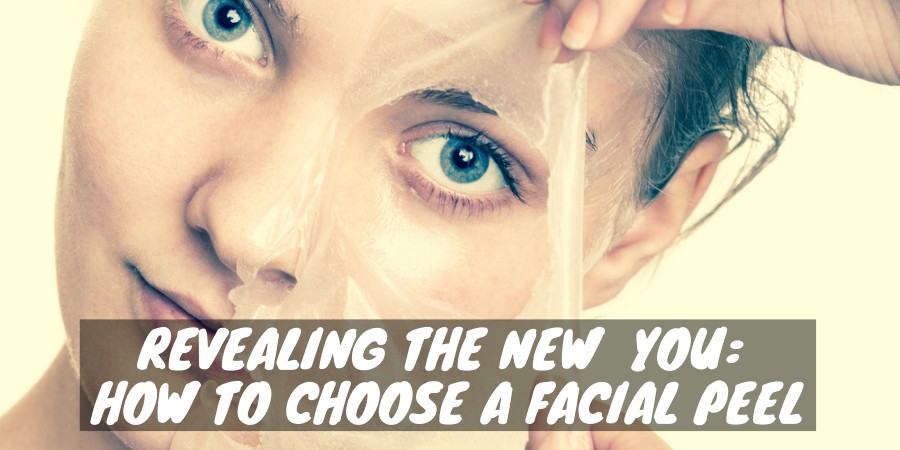If you’re dealing with issues like scarring, blemishes or wrinkles, the battle you’re undergoing with your skin can feel unwinnable.
But what if there was a secret weapon you could wield that was capable of knocking out all of these problems and more?
It’s called a facial peel or chemical peel, and it’s an incredibly effective way to smooth, brighten and beautify your skin.
Let’s learn more about facial peels and find out how to choose the best one for your skin.
What Are Facial Peels and How Do They Work?

A facial peel is a chemical solution that, when applied to your face, dissolves and removes the top layer(s) of your skin.
It’s not as gruesome as it sounds! Think of it as an ultra-thorough exfoliant that removes not just your dead skin cells, but your peskiest skin problems as well.
Once the outer layer of your skin is removed, new cells begin to generate to replace it. These new cells create a smooth, evenly-toned layer of skin.
In addition to looking better, these new cells are also healthier and better at absorbing moisture and skincare products.
What Can Facial Peels Do?
Lighten and Remove Age Spots
Unless you wear sunscreen every single day (which you should!), chances are that your skin shows signs of sun exposure.
Often, this takes the form of age spots: dark brown or gray spots that resemble flat moles or large freckles.
Age spots appear dark because they contain high concentrations of melanocytes — pigmented melanin cells that form in response to UV ray exposure.
They’re embedded deeply enough in your skin that regular facial scrubs won’t remove them.
But a chemical peel is powerful enough to remove the layers of skin where the melanocytes reside. As a result, your age spots will be peeled off, revealing new skin cells that haven’t been damaged by the sun.
Reduce Wrinkles and Fine Lines

Wrinkles form because your skin’s collagen production decreases as you age.
Collagen is the protein that gives your skin its elasticity and suppleness. Without it, your skin can’t hold its shape and becomes stretched out, resulting in wrinkles.
When facial peels remove your old skin, they also stimulate collagen production in the new skin cells. This collagen also makes its way to your fine lines and wrinkles, smoothing them out and replenishing their elasticity.
Eliminate Acne Scarring
Clogged pores and pimples aren’t just unsightly — they’re also stressful on your skin.
Severe acne can lead to follicle damage, which your skin then tries to repair with collagen. Often, though, this extra collagen causes the unevenness and discoloration we know as acne scarring.
Acne scars aren’t usually deep, so they can be removed with a chemical peel. The scar tissue is lifted along with the rest of your outer skin layers, making it look as if you never had acne at all.
Treat Hyperpigmentation
There are many causes of hyperpigmentation, ranging from sun damage to scarring to hormones to chronic inflammation.
Whatever the cause, the symptom is the same: dark patches of skin that make your overall skin tone look rough and uneven.
Like age spots, hyperpigmentation is the result of high melanin levels in certain areas of your skin. Another similarity: it can also be resolved by a facial peel.
If the melanin that’s causing your hyperpigmentation is close to your skin’s surface, a facial peel will be able to remove it, thus evening out your skin tone.
When Should You Use a Chemical Peel?
Once you notice skin problems arising, use a chemical peel as soon as possible. The longer you wait, the deeper the issue may become, reducing the effectiveness of a peel.
Most people find that they need several chemical peel sessions to really see results. Three to six sessions is normal, with superficial issues requiring as little as one peel.
Chemical peels should be performed two to four weeks apart — the more powerful the peel, the longer the gap between treatments. Because they’re so harsh, chemical peels must be spaced out or you’ll risk making your skin worse.
What Are the Various Types of Chemical Peels?
AHA Chemical Peels
AHA (alpha hydroxy acid) peels are the mildest and most common chemical peels.
Typically made from lactic acid (derived from milk) or glycolic acid (derived from sugar), AHA peels are among the most hydrating peels. This makes them great for dehydrated skin.
AHA peels are also effective at treating fine lines, hyperpigmentation and acne.
BHA Chemical Peels
BHA (beta hydroxy acid) peels are molecularly similar to AHA peels, but they have quite different effects.
Usually made from salicylic acid, BHA peels are used to control oil production, unclog pores, reduce inflammation and treat acne.
BHA peels penetrate deeper into the skin than AHA peels, so they can cause more discomfort than their alpha cousins. But this deeper penetration allows them to really dig into your pores and remove all that grease and grime.
TCA Chemical Peels
TCA (trichloroacetic acid) peels are stronger than both AHA and BHA peels. This means that there’s a higher risk of side effects when using them — but it also means that there are more benefits.
Effective against deep wrinkles, sun damage, moderate acne scarring and severe hyperpigmentation, TCA peels can have truly miraculous effects on your skin.
However, their strength means that there’s a longer recovery time associated with them. Peeling can continue for a week after treatment, compared with just a couple of days after an AHA or BHA peel.
And you’ll need to see a professional to get a TCA peel — it’s not safe (or FDA-approved) to do one yourself at home.
Carbolic Acid Chemical Peels
Also known as phenol peels, carbolic acid peels are the strongest you can get.
Their ultra-deep penetration makes them effective against just about any issue, from the deepest wrinkles to the worst acne scarring.
It also makes them a serious commitment: you’ll need at least two weeks for your new skin to grow, and you’ll likely need to avoid sun exposure for several months after treatment.
Like TCA peels, carbolic acid peels can only be performed by a medical professional. However, they’re so strong that you may only need one treatment to see the results you want.
What Strength of Chemical Peel Should You Use?

Superficial Chemical Peels
If it’s your first time getting a chemical peel, go with a superficial AHA or BHA peel.
Superficial peels may not be strong enough to produce immediate results, but they’re much gentler on your skin than the other types of peels.
Trying one of these first will give you an idea of what to expect from chemical peels, acquaint you with the process and show you whether your skin can handle this type of treatment.
You should also use a superficial chemical peel if you’re only trying to treat mild issues like light scarring or very fine lines. It’s best to use the gentlest peel possible to minimize your risk of bad reactions to the treatment.
Medium Chemical Peels
If you’ve tried a superficial chemical peel to no avail, or if you have more severe skin issues that you know a superficial peel won’t touch, go with a medium-strength TCA peel.
Medium chemical peels are strong enough to tackle issues like dark age spots and moderate wrinkles. But they’re not so strong that they’ll leave you in recovery mode for weeks after treatment, and they’re safer to use more frequently than deep peels.
Deep Chemical Peels
Finally, if you’ve tried superficial and medium peels but haven’t seen the results you want, ask your doctor if a deep carbolic acid peel is appropriate for you.
Not everyone can handle deep chemical peels, so it’s important to exhaust your milder options and consult with a professional before getting one.
You’ll need to make sure you can handle the aftercare, too, as it can take weeks or even months to recover from a deep peel.
But if you do decide to get one, you’ll see a huge difference in even your deepest wrinkles, darkest hyperpigmentation and worst acne scars.

